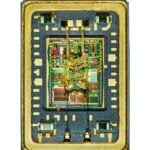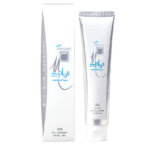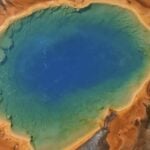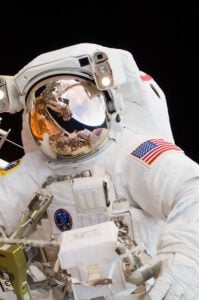Scratch Resistant Lenses
Inducted In: 1989, Consumer, Home, Recreation
For decades, ground and polished glass had been the preferred lens in the eyeglass industry. That changed in 1972 when the Food and Drug Administration issued a regulation that all sunglasses and prescription lenses must be shatter-resistant. The main disadvantage to glass is its brittleness, so eyeglass manufacturers turned to plastics. Plastic lenses had many advantages (lower manufacturing costs, excellent optics, far better absorption of ultraviolet radiation, lightweight), but although they were resistant to shattering, they were highly susceptible to scratching.
NASA’s Dr. Ted Wydeven of the Ames Research Center generated the technological seeds for the first scratch-resistant plastic lenses while working on a spacecraft water purification system. To alter a membrane in the purification process, Dr. Wydeven coated a filter with a thin plastic film using an electric discharge of an organic vapor. The research continued as NASA developed an abrasion-resistant coating for the astronaut space helmet visors and other plastic surfaces of aerospace equipment. Foster-Grant invested over 10 years of research trying to find a coating for lenses that could give glass-like scratch-resistance while keeping all the benefits of plastic. In 1983, Foster-Grant obtained a license from NASA for the scratch-resistant coating technology.
The company combined its own technology with NASA’s and produced a superior lens. Their scratch-resistant lenses lasted, with normal wear, ten times longer than the most widely used plastic optical lenses, surpassing even glass. Today, the majority of sunglasses, corrective, and safety lenses sold in the United States are made of plastic.
Related Technologies

GyroChip® – Quartz Rate Sensor
Inducted In: Computer Technology, Consumer, Transportation
[embed]https://vimeo.com/1083588443/4567ee1646[/embed] The GyroChip is the commercialized variety of a Quartz Rate Sensor developed by BEI Technologies. The sensing device is a small vibrating quartz gyroscope used as an inertial measurement sensor. Measurements of rotational spin rate and orientation are the…

Hydroxyapatite Remineralizing Toothpaste
Inducted In: Consumer, Health, Medicine
Hydroxyapatite remineralizing toothpaste is a product line from Sangi Co. Ltd – a Japanese based company that specializes in dental care products. Their products contain synthesized hydroxyapatite – a calcium phosphate compound found in bones in teeth. In 1980 the…

Nature’s Fynd and Liquid-Air Interface Fermentation
Inducted In: Consumer
Nature’s Fynd is a food company currently producing commercial meat and dairy substitute products. The protein-rich food is produced from a microbe originally discovered in geothermal springs in Yellowstone National Park. Researcher Dr. Mark Kozubal discovered this fungal microbe…

